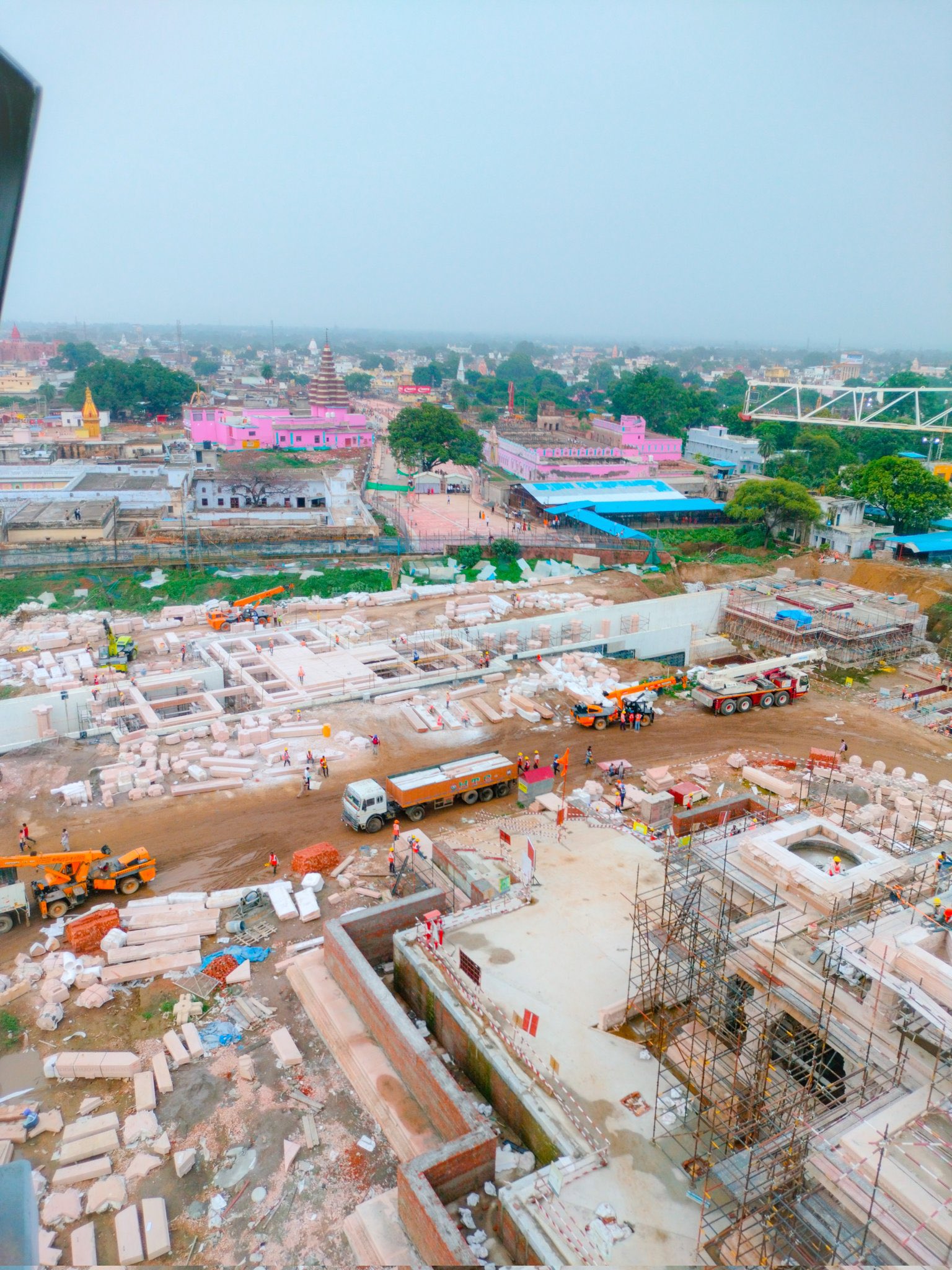Lucknow, 11 Oct: The Shri Ram Janmabhoomi Temple in Ayodhya is being erected with Ram-named bricks. These bricks are created using a specific mix that makes them tougher and more durable than regular bricks.
They are also etched with the words “Shri Ram 2023” to mark the year in which the temple is being built.
The bricks are provided by Atul Kumar Singh, a local brick kiln owner whose family has been creating bricks for centuries.
Singh’s grandfather, Vasudev Narayan Singh, was one of the persons who gave bricks for the construction of the first Ram temple at Ayodhya in the 16th century.
Shri Ram Brick Kiln Owner Atul Kumar Singh stated, “When I visited the Ram Mandir to get information about the special brick named Shri Ram 2023, I discovered that the bricks used here were demolished along with the disputed structure in 1992. The bricks discovered there were also found in the name VNS. It was under our grandfather’s name, Vasudev Narayan Singh.
“Today, when the temple is being built, our contribution should be like that of our forefathers, and when Ram Mandir Trust contacted us and offered to make Shri Ram Brick, we accepted it and told them that it is many times stronger than normal bricks,” he added.
“A special machine was used to strengthen the soil for this.” A specific team has been assembled to knead the dirt that will be used to make bricks. Before being utilized in building, these bricks were scientifically tested and found to be twice as strong as regular bricks, and they are currently created in the name of Shri Ram 2023. Larson and Turbo had agreed to purchase around 8 lakh 50 thousand bricks for the temple’s construction. However, these bricks are currently being used for various purposes on campus,” he noted.
Nripendra Misra, the chairman of the Ram Janmabhoomi Teerth Kshetra Trust’s building committee, previously stated that the first phase of the Ram Mandir construction in Ayodhya will be finished by December 30 of this year.
Misra, who was also Prime Minister Narendra Modi’s Principal Secretary, stated that the temple will be built in three parts, with worshippers able to enter when the first phase is completed.





